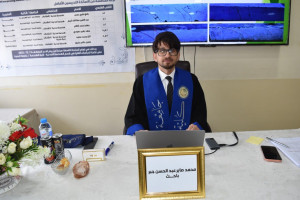
Prof. Dr. Saleh Issa Khasaf, a lecturer at the College of Engineering at the University of Basrah, and in partnership with Dr. Riyad Abdul Abbas Ali Al-Sultani from the Future University College, as well as Prof. Dr. Ibtisam Rahim Karim from the University of Technology, published a scientific research in one of the scientific journals specialized in publishing construction research, a journal:
International journal of concrete structures and materials
This journal is published in the United States by the Springer Nature Publishing House. It is classified within the first quarter (Q1), has an Impact Factor: 3.24, and (Site Score: 5.2), and is classified within the Clarivate and Scopus containers.
titled
"Dynamic Response Analysis of Coastal Piled Bridge Pier Subjected to Current, Wave and Earthquake Actions with Different Structure Orientations"
The research deals with a study on the effect of the orientation of the structures (bridges) under the influence of water forces represented by water currents and waves combined with seismic forces, On the dynamic response of the abutments of cantilevered marine bridges. The displacement and acceleration of the laboratory sample were measured using an intelligent laboratory system capable of modeling the real coupling between hydrodynamic forces, structures, and seismic forces. The results were presented and analyzed with respect to water depths, current velocity, wave characteristics, seismic force accelerations, and different structural trends. In addition, a three-dimensional numerical model was created for the laboratory model to verify the results of practical experiments, as well as to calculate the structural response under the influence of angles that cannot be examined in the laboratory.
The results proved that the effect of the direction of origin cannot be neglected in the design of hydraulic installations, especially sea bridges, and that the greatest effect was found when the origin was in a transverse direction with the effective forces with different variations under the combined influence of the applied forces.








